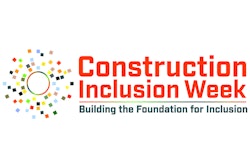
By Chris Lennon, BirdDogHR
By some estimates, more than half of businesses entering the construction industry will be woman- or minority-owned by 2020, yet fewer than 9% of those working in the U.S. construction industry are women. In 2013, only 12% of employed engineers were underrepresented minorities, despite being more than 30% of the U.S. population.
With low diversity in construction, manufacturing and engineering fields, companies are not only missing out on all the benefits of diversity — they are also failing to anticipate significant demographic changes. By 2050, minorities will represent 40% of the U.S. population. If construction, manufacturing and engineering companies don’t know how to attract and retain diverse employees, they will have significantly smaller talent pools from which to draw.
To remain competitive, companies need to become more inclusive and make space for employees of all different backgrounds and experiences. That takes more than vague diversity initiatives with good intentions. It takes concrete, attainable and measurable targets.
Not sure what to measure? Here are three steps you can take to start setting concrete diversity targets that your company can actually monitor, measure against and use as guides to meet its diversity goals.
Define your rationale
Sometimes companies jump to the what — diversity targets — before ever establishing the why. Why do you want to prioritize diversity at your company? How will it make your company better? More importantly, does it truly make sense to prioritize diversity at your company right now?
Articulating the why is important, so you don’t fall into the trap of pursuing diversity simply for diversity’s sake. Simply setting a goal to increase your number of minority hires, with no clear rationale behind it, can lead to a number of problems. For instance, if you do succeed in hiring a high number of minority candidates, but you put no focus on inclusion in the workplace, you may end up with unhappy, unsupported or under-performing employees — and a high risk of turnover.
If you have a narrow-minded focus on your percentage of minority hires, you may pass up great candidates in favor of those who aren’t a good culture fit, simply to meet a target number. At the far end of the spectrum, some companies have even been found taking advantage of their industry’s focus on diversity to get ahead in deceptive ways. The bottom line is, you should only work to make your company more diverse if it will benefit your employees, open new opportunities for the organization and improve or resolve existing issues in your culture.
If your company is serious about making diversity a priority — and you have identified that there is, in fact, good reason for you to prioritize diversity — it will require changes to company culture, habits and processes; all big changes to make. A workplace change program can only be successful if executives and employees understand and buy into the reason for the change.
Begin by meeting with your executive team to establish a rationale for why you want to build a more diverse culture. How do you expect it to make your company better? Be as specific as possible — include aspirational sentiment about workplace culture and pragmatic business drivers. When you have a clearly defined rationale for improving diversity at your company, share this with the entire staff.
Articulating the why behind your diversity efforts in clear terms will also help you identify the relevant Key Performance Indicators (KPIs) you should measure. If your leadership team agrees that one reason to build diversity is to improve employee engagement, it makes sense to measure KPIs that show how engaged your employees feel at work. If another intended result is to increase company earnings, monitor earnings as one of your KPIs.
Having a clearly defined rationale will immediately reveal targets you should measure to analyze the success of your diversity programs.
Think beyond recruitment and representation
It’s not enough to simply measure the number of minorities that have been hired or the number of women represented at your organization. Diversity metrics in recruitment and representation are quantity indicators, but they don’t recognize the quality of your organization’s diversity efforts or the quality of experience employees have once they are hired.
Shift to thinking about inclusion. An inclusive workplace provides opportunities for all employees to advance, learn and have their contributions taken seriously. It’s important to measure and assess diversity targets that reflect the inclusivity of your workplace.
Beyond recruitment and representation, set targets concerning:
Retention
If half of your annual hires are women, but few of them last longer than a year, it’s a sign your company may have an inclusion problem. Track the percentages of women and minorities at each level of seniority, and track their attrition rate at each level. Even small differences in retention rates can have a huge effect over a 10-year period.
Proactively survey your employees to look for advance warning of retention issues. In your survey, ask employees if they agree with statements like, “I can see myself at this company five years from now” and “My company makes an effort to retain women / ethnic minorities / people like me.”
Compensation
Set targets to address any pay inequities. Do men and women in the same roles earn the same pay? Do minorities? Include not only salaries and wages but also look at any discretionary pay, such as bonuses.
Advancement
It’s not enough to retain your diverse employees — your company also needs to be promoting quality employees. Set targets for advancing women, ethnic and racial minorities and other diverse employees into senior roles.
Relationships
Think beyond just the employees at your organization. One way to work towards improving diversity at your company is to build relationships with industry groups and local organizations that support minority populations. Set targets for a number of partnerships with organizations promoting the work of minority groups in your industry, a number of events that your company will attend, or an increase in employee participation in training opportunities for women and minorities.
Industry groups such as the National Association of Women in Construction and the National Action Council for Minorities in Engineering are valuable sources of training, mentorship and connections to prospective employees. Building a network with such groups will provide your company with access to a wealth of knowledge and talent.
When you’ve set your targets, don’t expect one program to be able to cover all this territory. It will take multiple programs and interventions to ensure true inclusion beyond recruitment and representation.
Establish baselines
Don’t forget to establish baselines as early as possible. In order to know if your programs to improve diversity and inclusivity are working, you need to know where your organization stood beforehand. Six months or a year from now, it’s not meaningful to know that 75% of female employees believe they will be with the company in five years if you don’t know how they felt before implementing your retention program.
As you establish baselines, consider benchmarking your company against similar companies in your industry or market. This will help your company see where it compares to others, and provide opportunities to learn from top performers.
If you can’t measure it, you can’t improve it
A McKinsey study of 366 public organizations found that ethnically diverse companies were 35% more likely to be more profitable than their competitors. In fact, for every 10% increase in racial and ethnic diversity on the executive team, U.S. companies’ earnings rose 0.8%. Despite the clear evidence that improving diversity benefits employees, workplace culture, and a company’s bottom line, organizations are still struggling to improve the diversity of their teams, especially in fields like construction, manufacturing, and engineering.
One reason is that diversity and inclusion are inherently difficult concepts to measure. As we’ve seen, simply tracking the number of minorities that are hired at your company doesn’t reflect whether people of different backgrounds feel welcome and supported, have opportunities for advancement, or whether they even stay at your company for the long term. Setting concrete and attainable targets to measure diversity and inclusion will help your company make real progress towards becoming a successful place to work for people of all backgrounds.
Chris Lennon is Vice President of Product Management at BirdDogHR. Chris is an active participant in the talent management community bringing over 18 years of experience to BirdDogHR. He has presented at numerous industry events and has been quoted as an industry expert in leading publications like TLNT, SHRM, CEOWORLD Magazine, and more.

















